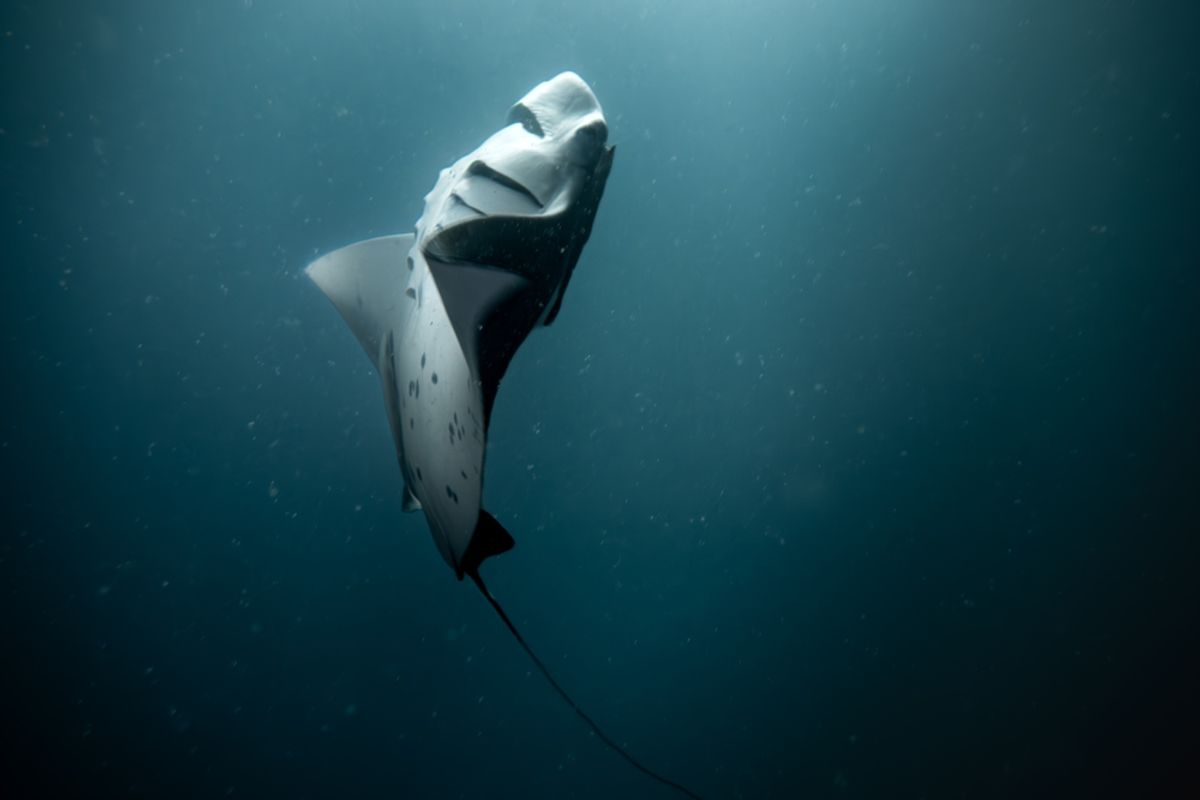
Manta Rays Dive Almost 4,000 Feet into the Deep Ocean — Not for Food, But for Directions

Table Of Content
In the open ocean, a manta ray’s path can seem deliberate, until, without warning, it slips beneath the surface and vanishes into the blue. Hours or days later, it reappears far from where it began. Scientists have long wondered what drives these plunges. Now, new evidence suggests the rays may be diving not to hunt, but to find their way across the open sea.
Over a decade, marine biologists tracked dozens of manta rays to understand their deep descents. They found that the animals occasionally plunged into the dark for hours, resurfacing hundreds of kilometers away. These dives often coincided with bursts of long-distance movement, hinting that manta rays may use the deep to reorient themselves before continuing their journey.
“We show that, far offshore, oceanic manta rays are capable of diving to depths greater than 1,200 meters [almost 4,000 feet], far deeper than previously thought,” said first author Calvin Beale in a press release. “These dives, which are linked with increased horizontal travel afterwards, may play an important role in helping mantas gather information about their environment and navigate across the open ocean.”
How Manta Rays Use the Deep Ocean
The deeper a manta ray dives, the more stable its surroundings become. Far below the surface, shifts in temperature, oxygen, and light flatten into steady gradients that can serve as subtle signposts. Beale and his colleagues think manta rays may use these layers to sense environmental cues, perhaps magnetic or chemical changes, that help them orient across the open ocean.
“Understanding the nature and function of deep dives helps explain how animals cross vast, seemingly featureless oceans and connect ecosystems thousands of kilometers apart,” Beale said.
Not every manta ray behaves the same way. Those traveling over deeper offshore waters were far more likely to dive, while individuals remaining near shallow coastal zones rarely descended beyond about 1,600 feet (500 meters). In areas where the seafloor dropped sharply into deeper water, the manta rays dove most often, suggesting that topography and depth influence when and why they dive.
Read More: Spiky, Star-Shaped Creatures Show the Deep Sea Is a “Connected Superhighway”
Hidden Manta Ray Diving Patterns
From 2012 to 2022, researchers attached small satellite tags to 24 oceanic manta rays off the coasts of Indonesia, Peru, and New Zealand. The devices recorded depth, temperature, and movement, then detached after several months to float to the surface, where the team could recover them and download the data. Finding the tags wasn’t easy; the scientists often had to scour wide stretches of ocean to spot a small gray antenna bobbing among the waves.
In the end, the team retrieved eight tags, yielding the first high-resolution record of manta diving behavior. Together, they logged more than 2,700 days of data, tracking thousands of dives and revealing that the rays occasionally plunged to depths of about 4,100 feet (1,250 meters), where the temperature hovered around 41 degrees Fahrenheit (5 degrees Celsius).
The dive profiles followed a distinctive pattern: long surface pauses, steep descents punctuated by short “steps,” and slow ascents back toward the light. These dives were rare — less than three percent of all recorded activity — but often preceded bursts of horizontal travel spanning hundreds of kilometers, suggesting a link between deep dives and long-distance navigation.
Read More: Into the Unknown: How Similar Is Deep Sea and Space Exploration?
Ocean Health and Conservation
The findings help explain how wide-ranging marine species knit together distant habitats, from coastal reefs to the open sea. By plunging into deeper, colder layers, manta rays may be calibrating their sense of place in a vast and changing ocean.
“Our study highlights how dependent migratory species are on both coastal and offshore habitats, stressing the need for international cooperation in their conservation,” Beale concluded. “It also reminds us that the deep ocean — which regulates Earth’s climate and underpins global fisheries, remains poorly understood but vitally important.”
Article Sources
Our writers at Discovermagazine.com use peer-reviewed studies and high-quality sources for our articles, and our editors review for scientific accuracy and editorial standards. Review the sources used below for this article:







